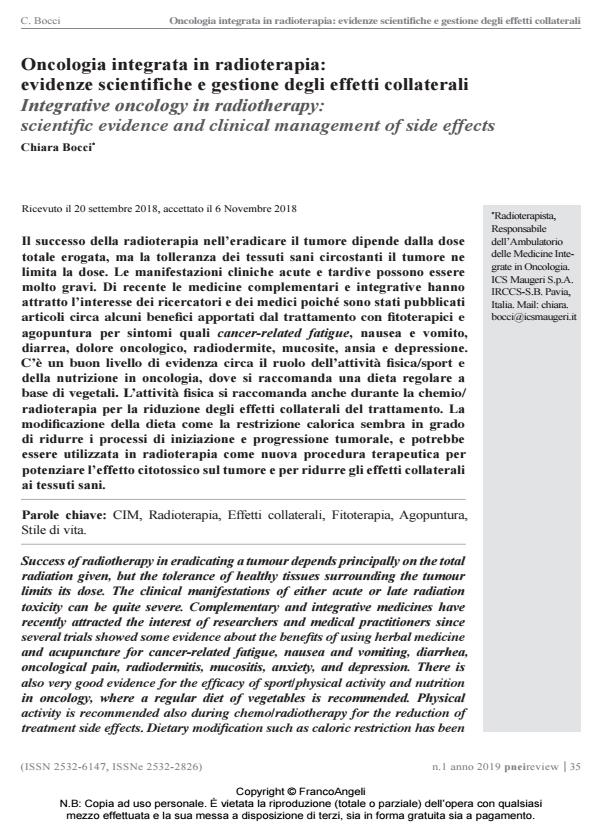Integrative oncology in radiotherapy: scientifi c evidence and clinical management of side effects
Journal title PNEI REVIEW
Author/s Chiara Bocci
Publishing Year 2019 Issue 2019/1
Language Italian Pages 11 P. 35-45 File size 1083 KB
DOI 10.3280/PNEI2019-001005
DOI is like a bar code for intellectual property: to have more infomation
click here
Below, you can see the article first page
If you want to buy this article in PDF format, you can do it, following the instructions to buy download credits

FrancoAngeli is member of Publishers International Linking Association, Inc (PILA), a not-for-profit association which run the CrossRef service enabling links to and from online scholarly content.
Success of radiotherapy in eradicating a tumour depends principally on the total radiation given, but the tolerance of healthy tissues surrounding the tumour limits its dose. The clinical manifestations of either acute or late radiation toxicity can be quite severe. Complementary and integrative medicines have recently attracted the interest of researchers and medical practitioners since several trials showed some evidence about the benefi ts of using herbal medicine and acupuncture for cancer-related fatigue, nausea and vomiting, diarrhea, oncological pain, radiodermitis, mucositis, anxiety, and depression. There is also very good evidence for the effi cacy of sport/physical activity and nutrition in oncology, where a regular diet of vegetables is recommended. Physical activity is recommended also during chemo/radiotherapy for the reduction of treatment side effects. Dietary modifi cation such as caloric restriction has been shown to decrease tumour initiation and progression, and could be used during radiotherapy as a novel therapeutic intervention to enhance the cytotoxic effect on the tumour and reduce the cytotoxic effects on healthy tissue.
Keywords: CIM, Radiotherapy, Side effects, Herbal medicine, Acupuncture, Lifestyle.
Chiara Bocci, Oncologia integrata in radioterapia: evidenze scientifiche e gestione degli effetti collaterali in "PNEI REVIEW" 1/2019, pp 35-45, DOI: 10.3280/PNEI2019-001005